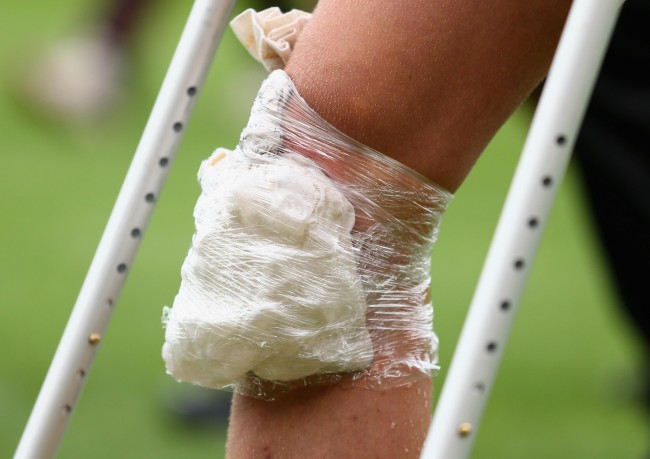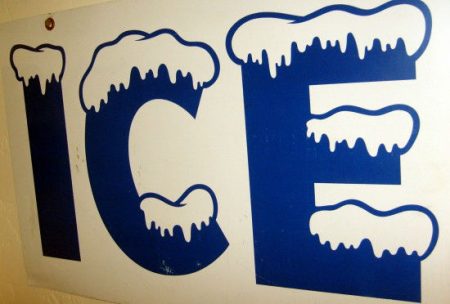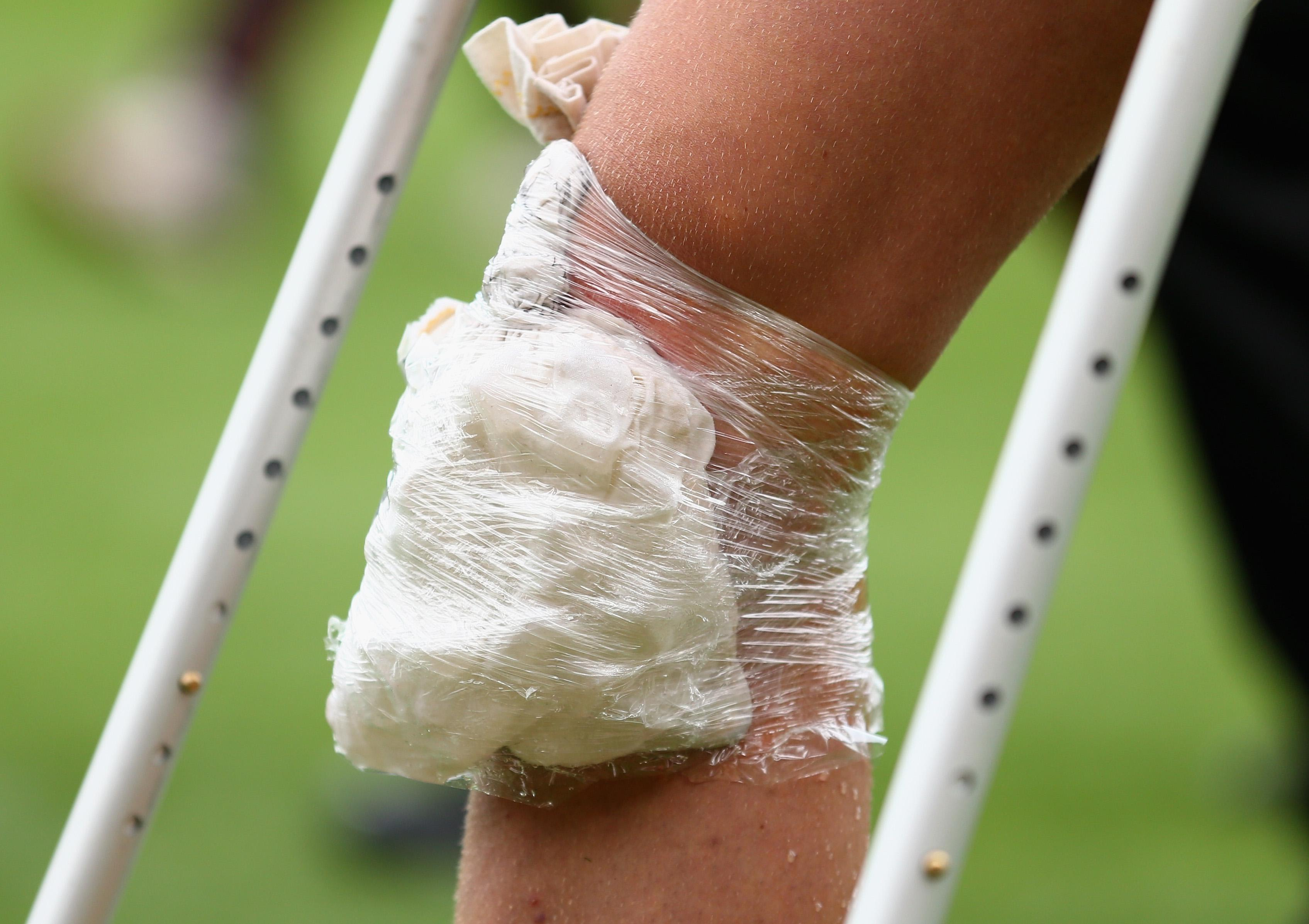 Since 1978 when Dr. Gabe Mirkin coined the term RICE, Rest, Ice, Compression, and Elevation have been the gold standard for treating athletic injuries. But now the ice age is melting, and a series of studies that show that injury treatment with cold therapy and total rest may delay healing has even Dr. Mirkin changing his mind.
Since 1978 when Dr. Gabe Mirkin coined the term RICE, Rest, Ice, Compression, and Elevation have been the gold standard for treating athletic injuries. But now the ice age is melting, and a series of studies that show that injury treatment with cold therapy and total rest may delay healing has even Dr. Mirkin changing his mind.
Saying no to ice an injury is controversial because everyone does it, including athletes, trainers, and physicians. The new line of thinking has caused extensive debate among experts who have relied on RICE for decades.
Ice has been the standard injury treatment for sore muscles and injuries because it helps relieve pain and swelling, and inflammation is considered bad. But current information shows that inflammation is the body’s first physical response to repairing tissue, and without it, healing does not happen.
Applying ice causes blood vessels around the injury to constrict and shut off the blood flow that brings in the inflammatory cells needed for healing. The vessels do not open again for hours after the ice is applied. Decreased blood flow can cause tissue to die and even result in permanent nerve damage. In addition, the ice reduces pain, which is an alert to avoid movements that may be harmful.
A study published in The Journal of Strength and Conditioning Research examined the influence of icing on muscle damage. Data from the study did show that icing delays recovery and should not be the first choice of treatment for injuries. After icing, there was an immediate increase in swelling. Indicators of muscle damage increased after the application of ice.

And research published in The American Journal of Sports Medicine in June 2013, said that although icing an injury relieved swelling it did not make recovery from muscle damage quicker. If the treatment reduces inflammation it delays healing. This includes the use of anti-inflammatory pain relievers like ibuprofen.
Inflammation is the same biological process used to kill germs in the case of illness or infections. If germs get into the body the immune system sends proteins and cells into the infected area to kill them. When muscles are injured the immune system sends the same cells to promote healing in the damaged tissue.
Inflammatory cells called macrophages release hormones into the damaged tissues that help them heal. Applying ice to reduce swelling prevents the body from releasing the hormone and delays healing. This was shown in a Cleveland Clinic study published in the Federation of American Societies for Experimental Biology in November 2010. The lymphatic system will naturally remove the swelling when the healing is done.
Mirkin, who wrote the Sportsmedicine Book in 1978 that introduced RICE, said last month that an injured person should stop exercising, although not resort to complete inactivity since total rest also does not stimulate tissue repair. Complete rest causes tissue to waste, so he recommends using light exercise as a repair stimulus.
Mirkin says it is okay to apply ice for pain relief immediately after the injury occurs, but for short periods only. He suggests icing for 10 minutes, removing the ice for 20 minutes, and repeating the process once or twice, but stresses that there is no reason to continue icing more than six hours after injury. If the injury includes broken bones, loss of consciousness, or an inability to move, go to the doctor!
According to The American Journal of Sports Medicine in January 2004, ice plus exercise may be of some help in healing ankle sprains.
A new acronym, MCE, replaces the old standard RICE and leaves out cold therapy for injury treatment. MCE stands for Move safely when you can as much as you can, Compress, and Elevate. The ice age is melting.
By Beth A. Balen
Sources:
DrMirkin.com
Strong Athlete
BreakingMuscle.com
Athletic Medicine
Athletic Medicine
mobility wod




32 thoughts on “Ice Age Melting: Rice May No Longer Be the Treatment of Choice for Injuries”
You simply state that there were studies but don’t provide any citations for people to look at them themselves.
Can you please provide these links or citations?
John: Move safely when you can as much as you can, Compress, and Elevate
Sounds logical, but then surely compression and elevation would also be counter productive? Both of these things would also reduce circulation and the number of inflammatory cells around the injury.
Then what is the first treatment/aid for sports injury???
After applying ice as per rice protocol to the muscle injury for the athletes . I think we have forgot the concept of hunting reaction in the body after applying ice so that process promote the healing
The only study you referenced that I could find (thanks to sloppy linking) was the Cleveland Clinic study about genetically-modified mice. It was NOT about ice, cryotherapy, or anything remotely related to cooling therapy for acute muscular injuries. If anything, the ONLY thing it proves is that people shouldn’t be genetically-modified in a way that causes their body to not respond at all to an injury. You make a huge leap by thinking that a genetic modification in mice that inhibits ALL swelling is the same as short-term, intermittent ice therapy which only mildly reduces swelling. If they altered the genes of the mice so they inhibited 100% of the inflammatory process, there’s no way to tell what other effects of the healing process they altered on which ice would have little or no effect.
If you’re going to write articles, you have a duty as a journalist to not only provide the correct references initially, but to follow up and make corrections/revisions as they are pointed out. Otherwise you do your name and reputation a disservice (as well as any website who publishes anything you write).
Do people forget about the principles and physiology?Ice will vasoconstrict and therefore restrict bleeding and should only be done for short duration of 20mins or so.thereafter for the site to return to its homeostatic temperature vasodilatation occurs hence speed up the healing process.thereafter to gently stretch out the part to encourage the muscle to heal in the line of pull/stress.
Dear Beth can you please provide full references to the articles that you quote. The articles in the The Journal of Strength and Conditioning Research is usually related to exercise induced muscle damage and has a very different mechanism to acute tears of muscle and tendons in that there usually is not bleeding. Ice was thought to help recovery from that sort of damage but is now known to hinder it. There is however no research out on the effect on acute tears where it is thought to limit the extent of the injury due to limiting excessive bleeding and thus secondary injury.
I could not find an article in The American Journal of Sports Medicine in June, 2013 that covered this topic for acute injuries.
This is the only study out there regarding ice and acute muscle tears and since it is a pilot study with way to few subjects, we cannot make anything from this. http://www.ncbi.nlm.nih.gov/pubmed/21059665
The researchers also did not look into immediate application of ice but rather 6 hours after injury
You lost credibility when you said “trainer” not Atheltic Trainer.
I use ice for a bit then i put the foot in a bucket with warm water b4 i give it therapy, and my injuries clear up just find and with good recovery. …..
This is not true. As soon as ice is removed there is a flushing of blood that is thought to help remove and restore an injury more quickly. It does not close off vessels for hours!
Why compression?
I refused ice to my knee post ACL repair and instead demanded gentle heat overnight. The next morning, the surgeon and physio came to check me and asked me to bend my knee up as far as comfortable. I was easily able to achieve a 90 degree bend and they were astonished. Being a specialist exclusive clinic treating the Swiss ski team etc., they told me none of their athletes had ever achieved such range of movement 12 hours post op. They encouraged mild exercise from day 1 and i continued using warmth and no cold on tthe joint. I added arnica and had eliminated almost all swelling and bruising within a week. Unheard of! Ice is bad – surgery is medically unduced injury and the rules apply equally!
Linda – I’m getting ready for rotator cuff repair and the thought of icing it – well, does not appeal and doesn’t make sense. So thanks for posting – it gives me some extra courage to go against accepted medical advice and do what I know is best for my body.
Of course, no one has to know but if I don’t tell them, how will they start realizing that the accepted dogma does NOT promote healing? I also like the arnica and will be taking it absolutely……..(Maybe some rescue remedy too! LOL)
I have used ice compesses for 10 minutes alternated with warm epsom salts compress for ten minutes. One hour cycles.
I think people are getting confused here. The use of ice is not recommended for injuries. They are not talking about surgery.
that is nothing new. standard guidelines have been to ice on and off for as long as I can remember. Also you cannot use the macrophage response to a pathogenic infection as a justification for needing the same response to mechanical trauma. The response of the body to the trauma without intervention will be excessive. This is why we suture wounds, fixate broken bones and prescribe antibiotics for infective endocarditis.
I love new information, but as an individual who suffers from arthritic pain and has already had three implants what is the solution? No ice, no ibuprofen? After each implant I was told to ice twenty minutes on, twenty minutes off. They even send you home with an ice machine. These are first rate surgeons at a major Boston Hospital. We are told that pain meds cause addiction, NASIDS can cause heart problems and gut issues..It gets more and more confusing.
The use of ice is not new and I recall well having a very heated argument with a Doctor at a football match in 1954 when he advocated icing a chaps ankle for an hour. The chap never regained full use of the limb and he suffered ice burns. At my clinic I suggest 3 mins ice immediately or within 20 minutes of an injury and then rest to the open air for 10 mins then apply warm towels for 3 mins repeating for 3 cycles. This seems to be the most effective from my experience. The application of ice to an arthritic joint is fraught with problems.
I suppose there are those who say that if they follow a set protocol then they cannot be sued. I see this as a skill, an art that has to be tailored to the individual injury and person having regard for all the circumstances. Tony Hardiman
Arnica, Ledum pal.,Hypericum are excellent homeopathic medicines-without any ‘side effects’- for pain relief. Ayurveda remedies like Dashang Lep (दशांग लेप) / Dukh-dabav Lep (दुख-दबाव लेप) also give excellent results. [A Lep is a sort of herbal paste to be applied hot / cold on the affected part]. Bach “Rescue Remedy” is certainly worth trying.
Chinese herbal liniments. That is the way to go rather than using ice. There are cold, cool, warm, or hot ones and can be used depending on the injury and what stage that injury is in. The problem with ice, is there is no encouragement of blood flow. using a cool liniment in the beginning stages of injury will take the place of ice and move blood.
Also, it would be helpful if you would link your sources in the article.
As a athletic trainer who works with athletes every day, I both agree and disagree with this article. Ice is essential immediately after an injury to reduce inflammation and swelling. Increased swelling = decreased range of motion = reduced return to play. Also, the statement they make about dying tissue is overly dramatic. If you are exposed to ice for a long period of time, perhaps, but general protocols for ice treatments are 20 minutes on, followed by an hour off. Typically, the inflammatory phase of healing lasts for about three days. Once you are through that process, we switch to heat. Using ice for injuries isn’t about completely eliminating the inflammatory process — it’s about controlling it, as well as providing comfort for the injured person. Too much swelling can be detrimental to an athlete’s recovery. While the article does have some valid points, it doesn’t paint the whole picture. For example, you never want to put heat on a deep bruise, as it will dramatically increase the swelling and could cause compartment syndrome, or myositis ossificans (bruised muscle will grow bone instead of muscle cells. Bad news bears).
I could go on and on about this, but as an athletic trainer, I will keep using ice. Why? Because it works. I’ve seen it work, on every athlete I’ve ever treated. I also have seen what happens when ice, and heat, is used inappropriately, and it’s not pretty either way.
What fo you put in your freezer?…dead animals!
Ice drives the pain deeper into joints ..sometimes using some cold combined with heat therapy is best than just cold treatment
It’s been a long time since I have read so many false claims in one article.
Yes yes absolutely
Confusing. Recovering from a very bad fall onto my knde. Huge hematoma on the knee and ichymosis from foot to thigh. Operated to drain the knee. Now using RICE AS RECOMMENDED. I MUST SAY THE MOST CHANGE COMES WHEN I HAVE RESTED, COMPRESSED WITH A STOCKING, AND ELEVATED.
Can the author please provide the correct referencing for the article they are highlighting, I have been through all the eTOCs for Strength and Conditioining Research and cannot find the article they illude to
When will compression and elevation be found to be mistakes?
TCM prescribes blood invigorating liniments & plasters for acute trauma like this… Which is quite the opposite of RICE. I have found that using it causes a bit more pain, but healing is accelerated,
http://www.kamwostore.com/Flying-Dragon-Liniment-Trauma-Chronic-Injury-p/hel174423.htm
Beth Balen,
Well written and well done.
Gabe Mirkin
Comments are closed.